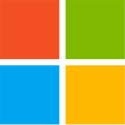
Ex-Samsung Executive Arrested for Stealing Company Secrets to Build Fabs in China
According to the latest report from Reuters, a former Samsung executive was arrested by the South Korean authorities yesterday, being accused of stealing company secrets to build a similar chip production facility in China. The former executive had worked for SK Hynix before joining Samsung, where he was involved in the Samsung Electronics division responsible for semiconductor factories. According to the report, the person planned to build a competing factory 1.5 km from a Samsung chip manufacturing facility in Xian, China. The suspect, who was not identified publically, has a collective of 28 years of experience with the South Korean chip makers.
Interestingly, the suspect also caused financial harm to the company, which the Suwon District Prosecutors' Office estimates to be around 300 billion won ($233 million). Prosecutors have announced the indictment of six additional individuals suspected of involvement in the case, including an employee of an inspection company who is charged with allegedly disclosing the architectural blueprint of Samsung's semiconductor plant. A police official commented, "We will sternly deal with any leakage of our technology abroad and strongly respond to illegal leak of domestic companies' core technologies in semiconductor, automobile and shipbuilding sectors among other."
Interestingly, the suspect also caused financial harm to the company, which the Suwon District Prosecutors' Office estimates to be around 300 billion won ($233 million). Prosecutors have announced the indictment of six additional individuals suspected of involvement in the case, including an employee of an inspection company who is charged with allegedly disclosing the architectural blueprint of Samsung's semiconductor plant. A police official commented, "We will sternly deal with any leakage of our technology abroad and strongly respond to illegal leak of domestic companies' core technologies in semiconductor, automobile and shipbuilding sectors among other."






















































